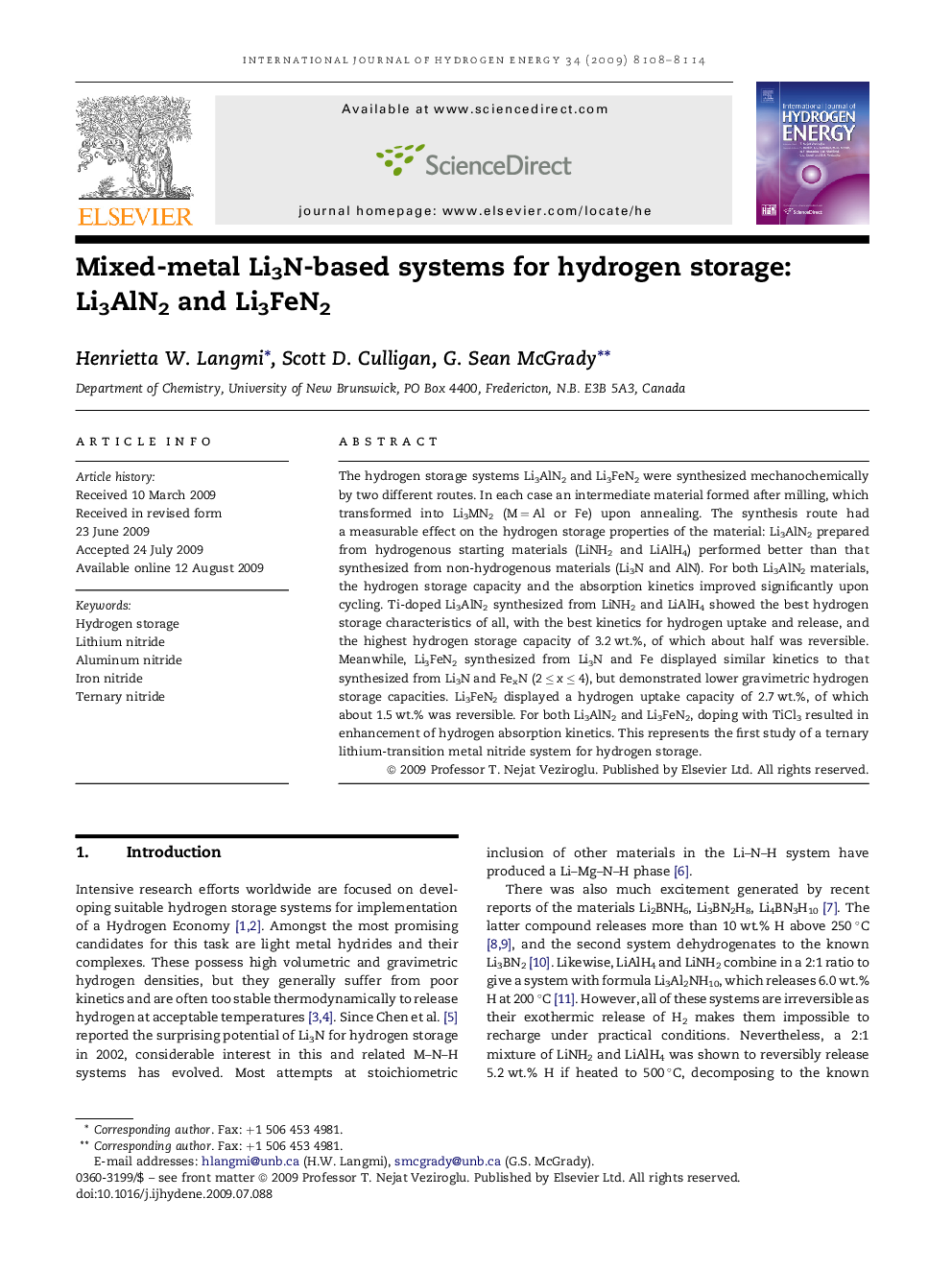| Article ID | Journal | Published Year | Pages | File Type |
|---|---|---|---|---|
| 1283070 | International Journal of Hydrogen Energy | 2009 | 7 Pages |
The hydrogen storage systems Li3AlN2 and Li3FeN2 were synthesized mechanochemically by two different routes. In each case an intermediate material formed after milling, which transformed into Li3MN2 (M = Al or Fe) upon annealing. The synthesis route had a measurable effect on the hydrogen storage properties of the material: Li3AlN2 prepared from hydrogenous starting materials (LiNH2 and LiAlH4) performed better than that synthesized from non-hydrogenous materials (Li3N and AlN). For both Li3AlN2 materials, the hydrogen storage capacity and the absorption kinetics improved significantly upon cycling. Ti-doped Li3AlN2 synthesized from LiNH2 and LiAlH4 showed the best hydrogen storage characteristics of all, with the best kinetics for hydrogen uptake and release, and the highest hydrogen storage capacity of 3.2 wt.%, of which about half was reversible. Meanwhile, Li3FeN2 synthesized from Li3N and Fe displayed similar kinetics to that synthesized from Li3N and FexN (2 ≤ x ≤ 4), but demonstrated lower gravimetric hydrogen storage capacities. Li3FeN2 displayed a hydrogen uptake capacity of 2.7 wt.%, of which about 1.5 wt.% was reversible. For both Li3AlN2 and Li3FeN2, doping with TiCl3 resulted in enhancement of hydrogen absorption kinetics. This represents the first study of a ternary lithium-transition metal nitride system for hydrogen storage.
